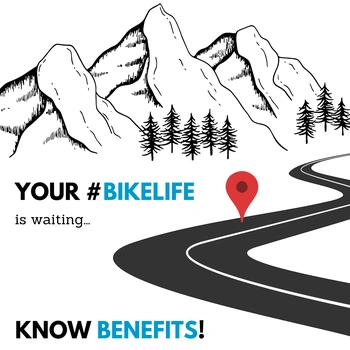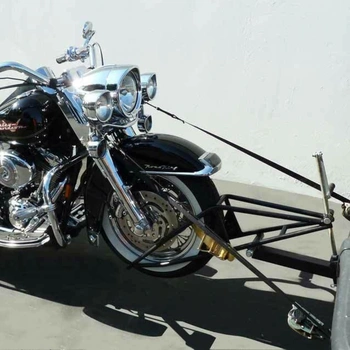
Riding motorcycle in the rain can be a difficult situation for any rider, be it riding in any part of the country. Riding in the rain increases the chances of accidents and at the same time, every motorcyclist at some or the other point is left with no choice than riding in the rain. To ride safely in rainy times or when roads are too slippery, keeping a few riding tips in mind can prove to be very helpful. In this blog, we have listed down motorcycle riding tips and suggestions for bikers when they are riding in the rain or in wet road conditions.
Avoid puddles: While splashing on those mini pools or puddles seems a playful and satisfying experience, it can actually do more harm than it looks. On water-logged roads, it becomes nearly impossible to know the depth of the pothole and cruising through the potholes is very dangerous for you and the motorcycle. You don’t want to crash the motorcycle in a pothole and damage your rim or front suspension. While riding a motorcycle in the rain, stay alert, keep your eyes on the road and if there is no option other than riding through the pothole, wait for a few minutes and watch other vehicles passing through it. After observation, follow their safe path and keep your bike upright with a steady throttle.
Watch for shiny surfaces like painted surfaces, cat's-eye reflectors and tar snakes: In dry conditions, these shiny surfaces generally seem harmless for your motorcycle, but when wet, they become a lot more slippery. Tar snakes which are hardly noticeable when you are in a car, become slicker on rainy days. While riding over tar snakes, ride slowly and let the tires find traction on their own. Look for oil spills that form rainbow colours on the road as these are slicker and can cause you to slip.
If possible, avoid riding immediately after the rain: Especially after the first rain begins, the roads are the slickest and chances of slipping are high when you accidentally hit a patch. Before it rains, the roads are full of oil, dirt, brake fluid which are soaked up in dry periods. When it rains, these are lifted to the surface and create a slick on water. These slicks heighten the chances of losing traction of your motorcycle. The best way to avoid it is to wait for some time until the rain washes off this dust and grim. If you are out in the rain, remember to ride slowly and keep a safe distance between the vehicle in front of you.
Find a dry line: On a rainy day, you probably see people riding on the wet side of the lane even when the adjacent area is dry. Water sitting on the road reduces your motorcycle’s tire grip as it comes between the tire and the road. Whenever possible, follow the dry lines that remain from the tire treads of the vehicle in front of you. The dry pavement is safer while driving in the rain and offers superior traction.
Get the right gear: If you are planning to go out on a rainy day, make sure you use the right motorcycle riding gears as these will not only protect you from getting wet but also keep you comfortable and warm. In case of an accident, using the right motorcycle gear and bike accessories can make a big difference to your safety. Depending on your budget, there are plenty of motorcycle riding gears like waterproof motorcycle gloves, biker rain suits, waterproof riding jackets, motorcycle gloves, motorcycle goggles and motorcycle rain pants. Since rain reduces visibility, wear bright gears with reflective surfaces so that other motorists can see you clearly. Also, it’s very important to wear a motorcycle helmet that is equipped with an anti-fog visor, breath guard, or a helmet with electric defrost functionality. Rain and moisture can cause your helmet to fog up. Anti-fog helmet visor keeps things pretty clear and enhances visibility in the rain. In the rainy season, always keep a waterproof bag or pocket where you can safely keep your cell phone, electronics or other valuable assets. As said, it's always better to be safe rather than sorry".
Check tire pressure and condition of the tire: Bikers should religiously check the pressure of the motorcycle tyre, especially in rainy seasons. Also timely check the condition of your tyres as worn out motorcycle tyres do not have necessary grip and traction that is needed to stop on slick and slippery wet roads. Make sure your tyres have enough traction left for riding in the rainy season.
Braking is a thing!: Progressing with smooth transitions is very important when it comes to braking. When leaning over a corner, avoid applying the front brake. Motorcycle tyres have limited traction, which reduces to an extent in wet and rainy conditions. Some people suggest avoiding the front brake and preferring the rear which is absolutely wrong as even on the wet roads, the front brake has more stopping power than the rear brake. It is recommended to use the front brake in combination with the rear one. The preferable way is to use 50% front to 50% rear when riding on a cruiser and 80% front to 20% rear when riding on all other motorcycles on a wet road. The bike rider should also check the effectiveness of brakes on short durations in wet conditions.






